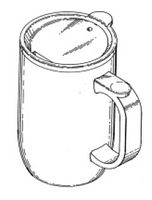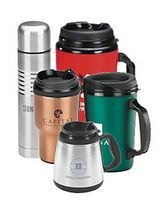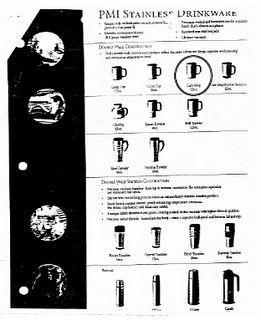TTAB Affirms Refusal Of Insulated Mug Design As Devoid Of Secondary Meaning
Finding Applicant Pacific Market's Section 2(f) evidence completely inadequate, the Board affirmed a refusal to register the product configuration shown below as a trademark for "drinkware, namely insulated beverage containers." In re Pacific Market, Inc., Serial No. 75444515 (April 14, 2005) [not citable].

The Examining Attorney deemed the design to be a non-distinctive configuration, unregistrable under Sections 1, 2, and 45 of the Trademark Act. Pacific Market contended that its proofs established acquired distinctiveness.
The Board noted that "the burden of showing acquired distinctiveness in a product configuration is significant," citing In re Gibson Guitar Corp., 61 USPQ2d 1948, 1951 (TTAB 2001) and In re Ennco Display Systems, Inc., 56 USPQ2d 1279, 1283-84 (TTAB 2000).
Pacific offered the declarations of two employees, stating that the mug in question was sold to Starbucks, Target Stores, and Seattle's Best Coffee, that its shape is unusual, and that it was "specifically designed with the intention that it be a distinctive design in the marketplace." However, the Board noted that the record lacked any evidence that the shape is recognized by the trade or by the ultimate consumers as a trademark of Pacific.

Pacific provided sales figures of 150,000 units over a five-year period, but failed to provide "any context in which to assess this number." Given the size of the market in this country for travel mugs, the Board found those sales figure unimpressive. In any case, the Board observed that even if the amount of sales were significant, that does not mean that people recognize the product shape as a trademark.
Pacific did not provide information regarding promotional expenditures, nor did it point to any "look for" advertising. In fact, the Board noted out that the subject design is not even highlighted in Pacific's product brochure (depicted below).

Finally, the Board distinguished this case from In re Motorola, Inc., 3 USPQ2d 1142 (TTAB 1986), on which Pacific relied heavily. Motorola's unique design for a hand-held microphone was found to have acquired distinctiveness based on sales of 3 million relatively expensive units over a 25-year period, declarations from non-employees attesting to the distinctiveness of the product shape, and promotional materials prominently featuring the microphone configuration. Here, in contrast, competing products have a similar look, the subject design is not featured in promotional materials, and no evidence from non-employees referred to the distinctiveness of the design.
Consequently, the Board had little difficulty in affirming the refusal to register.
TTABlog comment: Curiously, the Board stated that "we clearly do not find this configuration to be inherently distinctive." The Board failed to note the Supreme Court ruling in Wal-Mart Stores, Inc. v. Samara Bros., Inc., 529 U.S. 205, 54 USPQ2d 1065, 1069 (2000) that product configurations can never be inherently distinctive. What's particularly odd is that the Board did cite Wal-Mart, but only for the proposition that consumers are not predisposed to "equate" product design with the source.
Text ©John L. Welch 2005. All Rights Reserved.




0 Comments:
Post a Comment
<< Home